People Movers
Small Overlap Crash Test

The influx of all the amazing new electronic safety aids and crash avoidance systems found on-board new cars has been exceptional. There is no doubt that these systems are helping save lives and minimising injury. There has been one part of the latest car crash testing regime that the Insurance Institute for Highway Safety (IIHS) has brought in as part of their testing in order to help make cars safer.
The IIHS is an independent, non-profit scientific and educational organization dedicated to reducing deaths, injuries and property damage from motor vehicle crashes through their ongoing research and evaluation, and through the education of consumers, policymakers and safety professionals. The IIHS is funded by auto insurance companies and was established back in 1959. Its headquarters is in Arlington, Virginia, USA. A lot of what the IIHS does is crash test cars in a variety of ways to gather data, analyse the data, and observe the vehicles during and after the crash tests to quantify how safe each car is. The results and findings are published on their website at IIHS.org. Car manufacturers have been forced to take these tests seriously because, at the end of the day, these results matter and will affect car sales as the public become informed about how safe their cars will likely be in the event of an accident.
Since 2012, the IIHS has introduced a couple of new tests that they put the vehicles through to see how safe they are in an event of small overlap collision. The driver-side small overlap frontal test was brought about to help encourage further improvements in vehicle frontal crash protection. Keeping in mind that these IIHS tests are carried out using cars with left-hand-drive, the test is designed to replicate what happens when the front left corner of a vehicle collides with another vehicle or an object like a tree or utility pole. This crash test is a challenge for some safety belt and airbag designs because occupants move both forward and toward the side of the vehicle from the time of impact. In the driver-side small overlap frontal test, a vehicle travels at 40 mph (64 km/h) toward a 5-foot-tall rigid barrier. A Hybrid III dummy representing an average-size man is positioned in the driver seat. 25% percent of the total width of the vehicle strikes the barrier on the driver side.
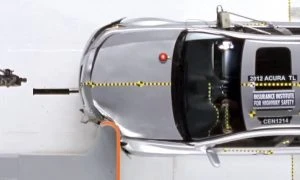
Most modern cars have safety cages encapsulating the occupant compartment and are built to withstand head-on collisions and moderate overlap frontal crashes with little deformation. At the same time, crush zones help manage crash energy to reduce forces on the occupant compartment. The main crush-zone structures are concentrated in the middle 50% of the front end. When a crash involves these structures, the occupant compartment is protected from intrusion, and front airbags and safety belts can effectively restrain and protect occupants.
However, the small overlap frontal crashes primarily affect a vehicle’s outer edges, which aren’t well protected by the crush-zone structures. Crash forces go directly into the front wheel, the suspension system and the firewall. It is not uncommon for the wheel to be forced rearward into the footwell, contributing to even more intrusion into the occupant compartment, which often results in serious leg and foot injuries. To provide effective protection in these small overlap crashes, the safety cage needs to resist crash forces that haven’t been amplified, concentrated on one area or aren’t tempered by crush-zone structures. Widening these front-end crash protection structures does help.
The IIHS also performs the passenger-side small overlap frontal test. The passenger-side test is the same as the driver-side test, except the vehicle overlaps the barrier on the right side. In addition, instead of just one Hybrid III dummy, there are two — one in the driver seat and one in the passenger seat.

Automotive manufacturers initially responded to these driver-side small overlap test results by improving vehicle structures and airbags, and most vehicles now earn good ratings. However, IIHS research tests demonstrated that those improvements didn’t always carry over to the passenger side. Discrepancies between the left and right sides of vehicles spurred the IIHS to develop a passenger-side small overlap test and begin issuing passenger-side ratings in 2017.
It is good that vehicle safety always seems to be on the improve and, with each new model, the new-car buyer can expect a safer vehicle. Thanks to crash testers like the IIHS, ANCAP and Euro NCAP, we are experiencing safer cars on our roads.
Best People Movers for 2021
There are those of us who would rather avoid being seen in what are technically called ‘People Movers’. By choice, they’re not a car that many would prefer over a roadster or GT. However, they do have their place and the current new people movers are stacked with the latest goodies, are comfortable and work hard to make their cabins a pleasant, safe space for plenty of people to spend time journeying in. Of course, the space and comfort throughout a people mover cabin is, generally, superb, making them ideal at doing what they say they will on the tin. So, if you have been particularly virile and require a decent vehicle for moving your large family about, or you just need those extra seats and space, then here are the newest people movers available on the market in 2021:
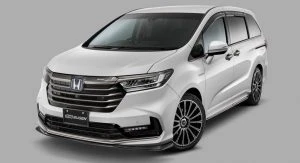
Honda Odyssey
Available in a 2.4-litre ULP, 129 kW, 225 Nm, 7-speed CVT, FWD, combined fuel consumption of around 8-9 litres/100 km, towing 450 kg un-braked and 1000 kg braked, 5-star ANCAP rating, seven seats, Honda Odyssey ViL7 (around $49k) and Honda Odyssey ViLX7 (around $56k), 5 yr/unlimited km warranty.
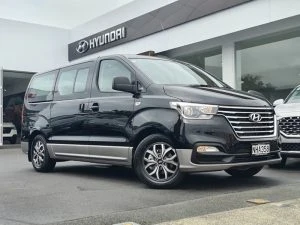
Hyundai iMax
Available in a 2.5-litre Turbo Diesel, 125 kW, 441 Nm, 5-speed automatic, RWD, combined fuel consumption of around 9 litres/100 km, towing 750 kg un-braked and 1500 kg braked, 4-star ANCAP rating, eight seats, Hyundai iMax Active (around $49k) and Hyundai iMax Elite (around $54k), 5 yr/unlimited km warranty with 1yr Roadside assistance.
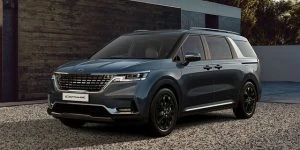
Kia Carnival
Available in a 3.5-litre ULP, 216 kW, 355 Nm, 8-speed automatic, FWD, combined fuel consumption of around 10 litres/100 km, towing 750 kg un-braked and 2000 kg braked, ANCAP rating untested but previous model was 5-star, eight seats, Kia Carnival S (around $51k), Kia Carnival Si (around $56k), Kia Carnival SLi (around $61k), Kia Carnival Platinum (around $68k), 7 yr/unlimited km warranty with 1yr Roadside assistance.
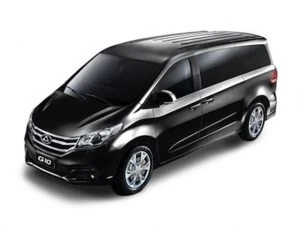
LDV G10
Available in a 1.9-litre Turbo Diesel with 110 kW and 350 Nm or a 2.0-litre ULP with 165 kW and 330 Nm. 6-speed automatic, RWD, combined fuel consumption of around 9 litres/100 km for the Turbo Diesel and 12 litres/100 km for the ULP. Towing 750 kg un-braked and 1750 kg braked for the Turbo Diesel and 750 kg un-braked and 1500 braked for the ULP. 3-star ANCAP rating, seven seats, LDV G10 Turbo Diesel (around $35k) and LDV G10 Executive (around $38k), 3 yr/100,000 km warranty.
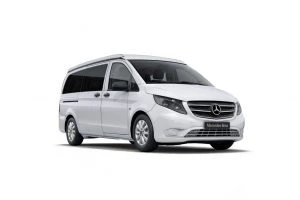
Mercedes-Benz Marco Polo ACTIVITY 220d
Available in a 2.1 Turbo Diesel, 120 kW, 380 Nm, 7-speed automatic, RWD, combined fuel consumption of around 7 litres/100 km, towing 750 kg un-braked and 2500 kg braked, 5-star ANCAP rating, seven seats, Mercedes-Benz Marco Polo ACTIVITY 220d (around $86k), 5 yr/unlimited km warranty and 5 yr roadside assist.
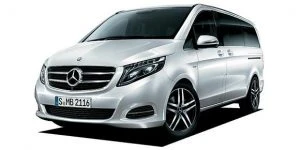
Mercedes-Benz V-Class V220 d
Available in a 2.1 Turbo Diesel, 120 kW, 380 Nm, 7-speed automatic, RWD, combined fuel consumption of around 7 litres/100 km, towing 750 kg un-braked and 2500 kg braked, 5-star ANCAP rating, seven seats, Mercedes-Benz V-Class V220 d (around $94k), Mercedes-Benz V-Class V220 d Avantgarde (around $111k), 5 yr/unlimited km warranty and 5 yr roadside assist.
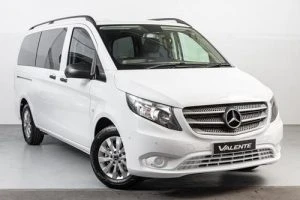
Mercedes-Benz Valente 116CDI
Available in a 2.1 Turbo Diesel, 120 kW, 380 Nm, 7-speed automatic, RWD, combined fuel consumption of around 7 litres/100 km, towing 750 kg un-braked and 2500 kg braked, 5-star ANCAP rating, eight seats, Mercedes-Benz Valente 116CDI (around $72k), 5 yr/250,000 km warranty and 5 yr roadside assist.
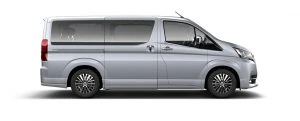
Toyota Granvia
Available in a 2.8-litre Turbo Diesel, 130 kW, 450 Nm, 6-speed automatic, RWD, combined fuel consumption of around 8 litres/100 km, towing 400 kg un-braked and 1500 kg braked, 5-star ANCAP rating, six seats, Toyota Granvia (around $65k) and Toyota Granvia VX (around $76k), 5 yr/unlimited km warranty.
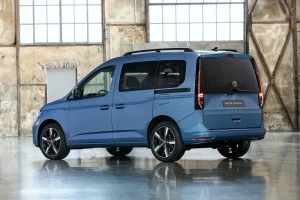
Volkswagen Caddy
Available in a 1.4-litre Premium ULP, 92 kW, 220 Nm, 7-speed automatic, FWD, combined fuel consumption of around 6.5 litres/100 km, towing 630 kg un-braked and 1300 kg braked, 4-star ANCAP rating, 5 or 7 seats, Volkswagen Caddy Trendline 5 seats (around $35k) and Volkswagen Caddy Comfortline 7 seats (around $41k), 5 yr/unlimited km warranty, 1 yr roadside assist.
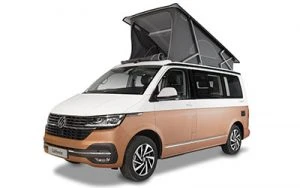
Volkswagen California Beach
Available in a 2.0-litre Turbo Diesel RWD with 110 kW and 340 Nm or a 2.0-litre Twin Turbo Diesel 4WD with 146 kW and 450 Nm. 7-speed automatic, combined fuel consumption of around 7 to 8 litres/100 km, towing 750 kg un-braked and 2500 kg braked, 4-star Euro NCAP rating, 5 or 7 seats, Volkswagen California Beach TDI340 7 seats (around $83k) and Volkswagen California Beach TDI450 4×4 5 seats (around $93k), 5 yr/unlimited km warranty, 1 yr roadside assist.
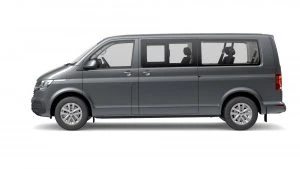
Volkswagen Caravelle TDI340 Trendline
Available in a 2.0-litre Turbo Diesel FWD, 110 kW, 340 Nm, 7-speed automatic, combined fuel consumption of around 7 litres/100 km, towing 750 kg un-braked and 2500 kg braked, 4-star Euro NCAP rating, 9 seats, Volkswagen Caravelle TDI340 Trendline (around $65k) 5 yr/unlimited km warranty, 1 yr roadside assist.
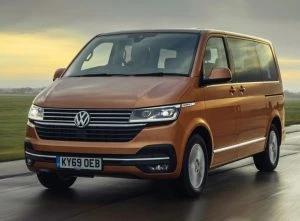
Volkswagen Multivan
Available in a 2.0-litre Turbo Diesel FWD with 110 kW and 340 Nm or a 2.0-litre Twin Turbo Diesel 4WD with 146 kW and 450 Nm. 7-speed automatic, combined fuel consumption of around 7 to 8 litres/100 km, towing 750 kg un-braked and 2500 kg braked, 4-star Euro NCAP rating, 7 seats, Volkswagen Multivan TDI 340 Comfortline (around $62k), Volkswagen Multivan TDI450 Highline (around $85k), Volkswagen Multivan TDI450 Comfortline (around $88k), 5 yr/unlimited km warranty, 1 yr roadside assist.